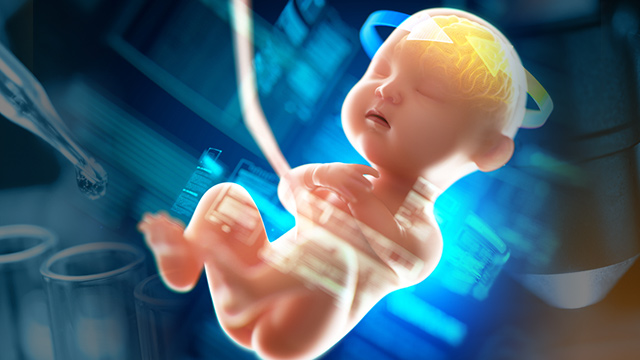A Chinese scientist claims of producing a gene edited babies by utilizing the basic principles of gene editing. He successfully experimented it by changing the DNA sequence to increase the resistance against the HIV virus. Other researchers and the scientific community strongly condemned this research since this technique inappropriate, dangerous, and premature with some serious complications.
Before getting into details of the gene edited babies, one should have an idea what gene therapy/editing is about?
Gene editing allows scientists to deliberately alter the sequence of DNA to remove mutations. It is done by inserting, modifying, deleting or replacing the specific area in the genome of the living organisms.
CRISPR Technique to Perform Gene Editing
Every cell in our body contains a copy of the genome, over 20,000 genes, 3 billion bases of DNA. The DNA consists of two strands twisted into a double helix. Our genes are responsible to shape us as individuals and species. Changing genes in living cells is not easy but recently a new method has been developed that promises to dramatically improve our ability to edit the DNA in different species including humans. And that method is CRISPR.
CRISPR is an abbreviation of “ Clustered Regularly Interspaced Short Palindromic Repeats”.
Components of CRISPR
It consists of two components.
- The Cas9 protein that can cut DNA
- A Guide RNA that can recognize the sequence of DNA to be edited.
How CRISPR works in humans and other organisms?
- To use CRISPR/Cas9, scientists first identify the sequence of the human genome that is causing the health problem.
- Then they create a specific guide RNA to recognize that particular stretch of A’s, T’s, G’s and C’s in the DNA.
- The guide RNA is attached to the DNA cutting enzyme; Cas9 and this complex are introduced to the target cell.
- It locates the target base sequence and cuts the DNA. At that point, a scientist can edit the existing genome by either modifying, deleting or inserting new sequences and effectively make CRISPR/Cas9 a cut and paste tool for DNA editing.
GENE EDITED BABIES
CRISPR is a revolutionary technique that’s been used for a ton of research in the last few years. It allows scientists to delete, turn off, or insert the genes all more cheaply and accurately than ever before.
This CRISPR technique has allowed a Chinese Researcher to develop Gene Edited Babies—Claimed by a Chinese Scientist.
Jiankui’s Experiment on Human Germ Cells
A Chinese researcher Jiankui, a scientist at the Southern University of Science and Technology in Shenzen, China has recently claimed to use the gene editing technique known as CRISPR-Cas9 in order to change the DNA of the human embryos via in-vitro fertilization. In a YouTube video, he clearly says that he has impregnated the women via IVF with such embryos that have the potential to disable the genetic pathway of HIV.
According to reports, the parents of the baby have gone through IVF(in-vitro fertilization) and shortly after the eggs were fertilized, he used the CRISPR technique to cause genetic mutation to disable the CCR5. The parents were convinced to participate in this experiment because the father was HIV+.
Paula Canon- who studies HIV at the University of Southern California says that it doesn’t make any sense to recruit families with an HIV+ father as there is no real risk of HIV-virus transmission to the children. And if the transmission occurs, still there are less risky ways to ensure that the baby doesn’t encounter the virus even the father is HIV+. However, the very details of this experiment are still unknown.
COMPLICATIONS
What he has actually done is that he has disabled the pathway of CCR5 that is involved in the immune system regulation. The HIV-virus exploits this pathway by encoding a protein that allows HIV to enter and infect the human cells. So by disabling this gene, he aimed to make the babies resistant to HIV-virus.
This is CCR5 involves in causing infection by allowing the HIV-virus entry in the cell. Another protein called CXCR4 also allows the HIV-virus to enter the host and cause infection. It implies that the people who are naturally CCR5 negative aren’t completely resistant to HIV-virus because there is a chance of infection onset due to CXCR5 strain.
Thus, the Jiankui is not completely successful in making gene edited babies resistant to HIV-virus (if his claim is true), because he has only inhibited the CCR5 pathway; the other pathway of CXCS4 is still intact in babies.
Drawbacks of Gene Editing
This whole research has come out in front of the world through a YouTube video. If true, it seems to be very insignificant in genetic science. Because there are serious problems associated with this research.
Initially, the research uploaded on YouTube, no research publishing has been made by the researcher in the research paper or any journal. So, it is very difficult to extract the precise details of the experiment. Interestingly, the parents of the gene edited babies have declined to come on the frontline for any kind of interview.
Secondly, we know that it can be very problematic to perform experiments on human germ cell(embryos). Two serious complications that can arise are Mosaicism in which the edited-DNA doesn’t appear in each and every cell of the human embryo and off-target effects; in which due to unknown consequences many other parts of the genome also get edited.
In order to proceed with such experiments on humans, scientists have to sort out all such issues so that the adverse effects of the gene editing minimized for proper clinical treatment.
Bioethics Concerned with Gene Edited Babies
The experiment has been universally condemned by scientists. According to every expert on medical ethics, this experiment should not have done in the very first place. Here’s why;
CRISPR had been used to edit genes in human embryos before now but only for research purposes, not with the intentions of implanting embryos or allowing them to develop. The consensus among both scientists and policy makers is that we are nowhere near ready to implant genetically edited embryos, we need more research first.
Ethically, there are still some open questions about the implications of editing someone’s entire genome before they’re born. This world isn’t ready yet for the CRISPR edited babies because of some pretty basic safety concerns. CRISPR isn’t perfect yet. It sometimes changes the gene in some unexpected ways causing an unintended mutation and the last thing is an accidental potential dangerous change in every single cell in someone’s body.
The few approved gene therapies that involve directly editing someone’s DNA inside their body use older, better-studied techniques- Not CRISPR.
There are few CRISPR based techniques in trials right now, but they work by taking certain types of cells out of the patients, modifying them, and then putting them back. No matter which technique they use, these all techniques have one thing in common. They don’t touch Germ-line cells. Germ line cells are the ones that produce eggs or sperm. To make sure they stay unmodified, one can’t pass on the edited DNA to a child. Even if something goes wrong, one avoids the risk of introducing problems to future generation.
This is not a good strategy for scientific progress, scientists have assured that whenever they utilize CRISPR on the human embryo, it would be only for genetic mutation corrections or genetic disease.

Komal Nadeem is based in Jhelum. She is doing BS. Biochemistry from Quaid-i-Azam University, Islamabad. Her Interests are Reading books and novels, Gardening, Observing surroundings.

